Leaf Feeders
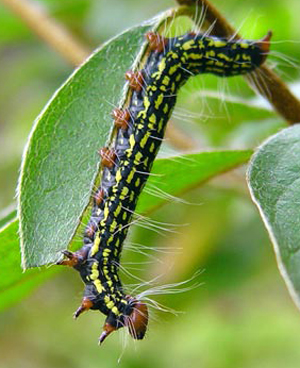
Chris Evans, University of Illinois, Bugwood.org
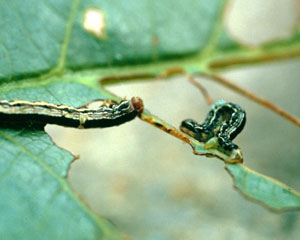
A. Steven Munson, USDA Forest Service, Bugwood.org
Sap Feeders
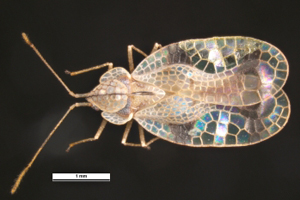
Pest and Diseases Image Library, Bugwood.org
These lace bugs spend the winter as eggs inserted into leaves. The eggs hatch in early spring and the nymphs begin to feed on plant sap. Development from egg to adult takes about 5 weeks. There are several generations each season. Usually, there are only a few insects in the first generation so feeding symptoms are not noticed. Numbers and damage to plants increase to a peak in late summer. When abundant, feeding can make plants unsightly and may cause premature leaf drop.
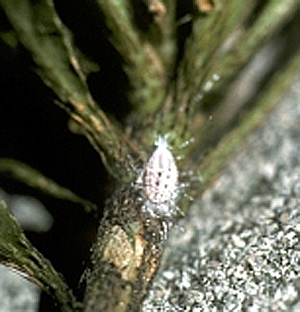
United States National Collection of Scale Insects Photographs,
USDA Agricultural Research Service, Bugwood.org
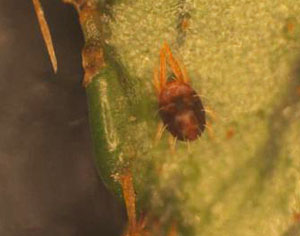
Tracy Wootten, University of Delaware, Bugwood.org
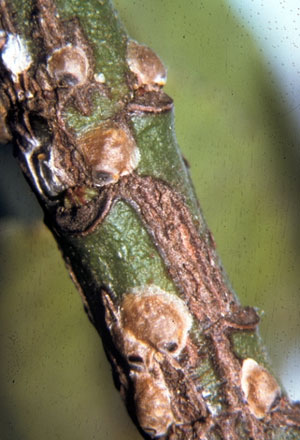
United States National Collection of Scale Insects Photographs , USDA Agricultural Research Service, Bugwood.org
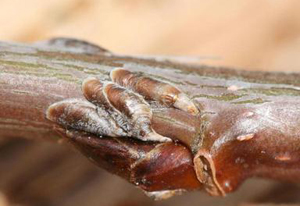
Whitney Cranshaw, Colorado State University, Bugwood.org

John A. Weidhass, Virginia Polytechnic Institute and State University, Bugwood.org
Aphids produce large amounts of a sugary liquid waste called "honeydew". The honeydew that drops from these insects can spot the windows and finish of cars parked under infested trees. A fungus called sooty mold can grow on honeydew deposits that accumulate on leaves and branches, turning them black. The appearance of sooty mold on plants may be the first time that an aphid infestation is noticed. The drops can attract other insects such as ants, flies, and wasps that will feed on the sticky deposits. For more information, see Entfact 103.
Borers
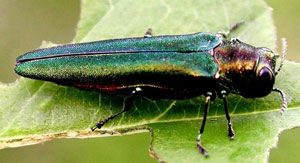
Leah Bauer, USDA Forest Service Northern Research Station, Bugwood.org
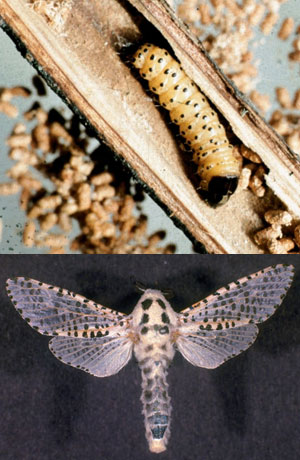
larva: Petr Kapitola, Central Institute for Supervising and Testing in Agriculture,
Bugwood.org ; adult: James Solomon, USDA Forest Service, Bugwood.org
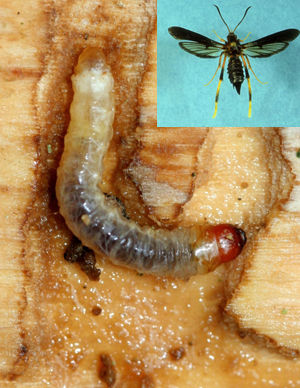
larva: David Cappaert, Bugwood.org;
adult (inset): James Solomon, USDA Forest Service, Bugwood.org
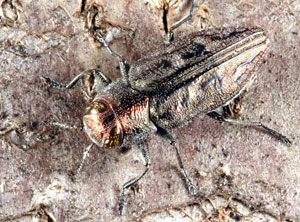
Jim Kalisch, University of Nebraska-Lincoln Dept of Entomology
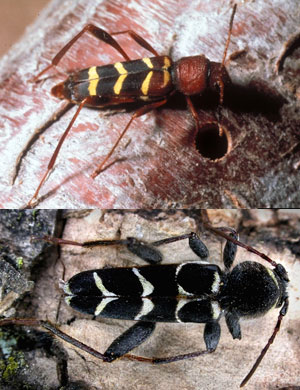
Redheaded ash borer: Howard Ensign Evans, Colorado State University, Bugwood.org;
Banded ash borer: David Cappaert, Bugwood.org
Root Feeders
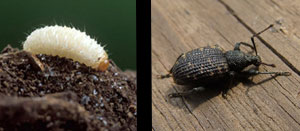
grub: Peggy Greb, USDA Agricultural Research Service, Bugwood.org ;
adult: Cheryl Moorehead, Bugwood.org
Galls
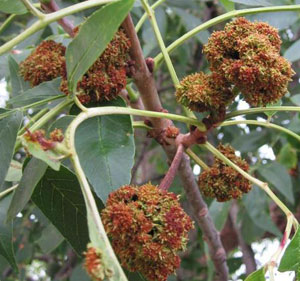
Dawn Dailey O'Brien, Cornell University, Bugwood.org